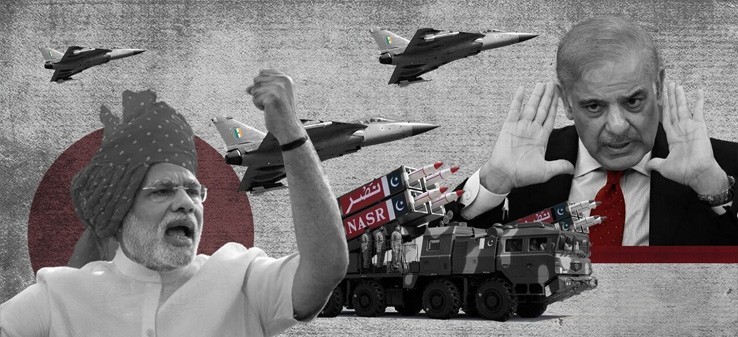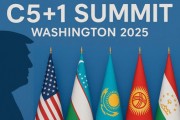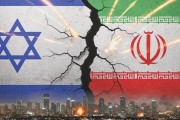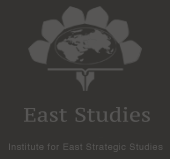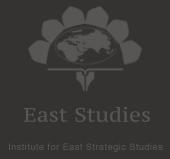The future of the Kashmir crisis
India - Pakistan Tensions and the Future of Kashmir Crisis
The future of the Pakistan-India tension depends heavily on the two nations’ ability to build trust mechanisms, and reach a historical compromise over Kashmir. The international community must prevent this conflict from becoming a battleground for great power competition, and instead support sustainable solutions for one of the longest-standing disputes of the 21st century.
By: Dr.Mansoureh Eskandaran
17 minutes Reading
17 minutes Reading
What You Will Read in This Report:
⦁ Introduction
⦁ Structure of the Recent Tensions
⦁ Triggers of the Current Crisis
⦁ Taliban Government Activism
⦁ Regional and International Actors
⦁ Economic and Human Dimensions of the Crisis
⦁ From Water Crisis to Strategic Water War
⦁ Hydro-political Drivers in the 2025 Crisis
⦁ Conclusion: A Narrow Border Between War and Peace
India - Pakistan Tensions and the Future of Kashmir Crisis
Introduction
The recent escalation of tensions between India and Pakistan, which reached a peak in May 2025, stems from their longstanding dispute over the region of Kashmir. This crisis, which began with the independence of both nations in 1947, has now become more complex with the rise of nuclear strike threats and regional power interventions.
The recent developments accelerated following the deadly April 22, 2025 attack on Indian tourists in Pahalgam (Indian-administered Kashmir)—an incident for which India blamed Pakistan, while Islamabad denied any involvement. This attack, and the series of assaults that followed, have become a turning point in Indo-Pak relations. Experts believe that the escalation of tensions could potentially lead to one of the most dangerous security challenges in South Asia this decade.
The combination of cyber-electronic-physical warfare, targeted use of indigenous technologies and reduced dependence on the West/China, a redefinition of nuclear deterrence, and the shattering of the notion of India’s technological superiority in the region have together forged a new paradigm in India-Pakistan conflicts. Even if the ceasefire holds, the risks of proxy warfare and environmental crises (such as water shortages) remain, and given the deep-rooted history of tension, the relationship between the two countries remains fragile and complex.
Structure of the Recent Tensions
1. Triggers of the Current Crisis
⦁ The Pahalgam Attack (April 22, 2025)
The Pahalgam attack occurred on the afternoon of April 22 in the mountainous meadows of Pahalgam, a region accessible only on foot. According to eyewitnesses, armed assailants (exact numbers unknown) emerged from the forest and opened fire on tourists using automatic weapons. Witnesses reported that the attackers questioned victims about their religious identity before shooting—indicating ideological and religious motives.
After the attack, The Resistance Front (TRF) claimed responsibility for it. The Indian government accused Pakistan of supporting cross-border terrorism, asserting that Lashkar-e-Taiba, under the patronage of Pakistan’s Inter-Services Intelligence (ISI), was behind the attack. Islamabad, however, denied any involvement and called the accusations baseless. This attack not only plunged Indo-Pak relations to their lowest point in years, but also significantly raised the risk of broader conflict in the region.
⦁ Operation Sindoor– May 7, 2025
Launched on May 7, 2025, Operation Sindoor (meaning “golden Eagle” in Sanskrit) was a calculated cross-border military operation executed by the Indian Armed Forces in direct response to the Pahalgam terrorist attack. This marked India’s largest military action on Pakistani soil since the Balakot operation in 2019, signaling a shift toward a “decisive response doctrine” against cross-border terrorism.
Launched on May 7, 2025, Operation Sindoor (meaning “golden Eagle” in Sanskrit) was a calculated cross-border military operation executed by the Indian Armed Forces in direct response to the Pahalgam terrorist attack. This marked India’s largest military action on Pakistani soil since the Balakot operation in 2019, signaling a shift toward a “decisive response doctrine” against cross-border terrorism.
In this operation, India struck three locations in Pakistan-administered Kashmir (Muzaffarabad region) and six locations in mainland Pakistan (Punjab and Khyber Pakhtunkhwa provinces). The targets included:
⦁ Militant training camps in Balakot
⦁ Militant training camps in Balakot
⦁ Lashkar-e-Taiba logistical centers in Bahawalpur
⦁ Ammunition depots near the Line of Control (LoC)
According to India, 70–80 militants (including 12 senior commanders), and 15–20 civilians (collateral) were killed. Pakistan, however, reported that in these attacks 5 militants and 14 civilians killed, and 30 civilians injured, along with damage to four training camps, two ammunition depots, and a strategic bridge.
The use of India’s most advanced military equipment—which could reshape the security calculus in South Asia—demonstrated India’s willingness to pay higher political and military costs in response to what it labels as Pakistan-backed terrorism.
⦁ Operation Bonyan Mursas (May 9, 2025) – Pakistan’s Response to Sindoor
Launched on May 9, 2025, Operation Bonyan Mursas (meaning “firm foundations”) was a multidimensional military campaign by the Pakistan Armed Forces with strategic objectives. It was both a direct retaliation to India’s Operation Sindoor, and a demonstration of Pakistan’s advanced military capabilities.
Analysts have dubbed this as “Pakistan’s first smart war”, combining electronic and cyber warfare with precision strikes. Under the direct oversight of General Sahir Shamshad Mirza (Chairman Joint Chiefs of Staff), the Pakistan Air Force and Army jointly targeted:
⦁ Awantipora Airbase (Jammu and Kashmir)
⦁ BrahMos missile storage facility in Pathankot (Indian Punjab)
⦁ The command center of India’s Solar Shield defense system
⦁ Logistics infrastructure in the Siachen region
Pakistan used:
⦁ Babur-3 missiles (2,200 km range, nuclear-capable)
⦁ Raad-2 air-launched cruise missiles
⦁ Decoy drones to deceive India’s air defenses
⦁ The REK (Radio Electronic Combat) system developed by Pakistan’s NESCOM, which disrupted
Indian communication networks for 47 minutes and spoofed false targets on S-400 radars
Indian communication networks for 47 minutes and spoofed false targets on S-400 radars
Pakistan claimed the attack resulted in:
⦁ Destruction of 4 military bases
⦁ Damage to 11 ammunition depots
⦁ Annihilation of 2 SWATHI radar systems
⦁ Death of 140–160 Indian military personnel
India, however, reported the downing of 2 JF-17s and 3 cruise missiles, with only 7 military and 21 civilian casualties, and damage limited to one military hospital.
Nevertheless, it seems that in addition to its deterrence goals, Pakistan could disprove the invincibility myth of Russia’s S-400 system and alter the strategic balance in Siachen, a critical Indian supply route.
The underlying intent of both nations was to demonstrate nuclear deterrence and the ability to conduct precise strategic strikes. These operations not only shifted the regional military balance, but also served as the first real test of Pakistan’s “Strategic Deep Defense Doctrine 2022.” Analysts warn that such operations could set a dangerous precedent for “rapid wars claimed as victories by both sides,” which may prove extremely difficult to control. Meanwhile, the conflict is not limited to physical and cyber strikes; and the involvement of other state and non-state actors has further complicated the structure of this confrontation.
2. Taliban Government Activism
The Taliban government finds itself in a precarious position amid Indo-Pak tensions. On one hand, it has engaged with India (e.g., the Indian Deputy Foreign Minister’s visit to Kabul for infrastructure discussions); on the other, it faces pressure from Pakistan, which claims that militant groups operating from Afghan soil are attacking Pakistan.
Originally brought to power in the 1990s with direct ISI support, the Taliban served as a “strategic depth” tool for Pakistan against India. However, during the 2001–2021 period and after the fall of the Taliban rule, India invested $3 billion in Afghan infrastructure (e.g., dams and Parliament building) to expand its influence. Since the Taliban’s return to power in 2021, Pakistan initially expressed tacit support, but tensions flared over the Tehrik-e-Taliban Pakistan (TTP), which operates from Afghanistan with the Afghan Taliban’s backing.
As a result, the Taliban’s official stance on Kashmir has been limited to public statements of neutrality and calls for a peaceful resolution. Some Pakistani analysts interpret this Taliban stance as a pro-India bias in the current tension with Pakistan. Meanwhile, some Indian social media users view recent Taliban engagement with India as a significant event.
Afghanistan has traditionally aimed to remain neutral in Indo-Pak disputes. For two decades, the republican regime tried to convince India and Pakistan that their activities in Afghanistan would not be seen as against the other. In reality, however, India accuses the Taliban regime of harboring groups like Lashkar-e-Taiba (LeT) and Jaish-e-Mohammed (JeM) in its eastern provinces.
From a geopolitical perspective, blocking India’s access to Central Asia by halting the TAPI pipeline project may harm Indian interests. Nevertheless, the Taliban seeks to broaden its engagement with India via diplomatic and economic channels, such as allowing India’s diplomatic mission to remain in Kabul (with 15 diplomats) as well as negotiating over the Pashdan Dam project in Herat, powered by Indian turbines. The complexity of the Taliban government's role in the Kashmir crisis will pose threats and opportunities for India and Pakistan.
| Table 1: The Talibans activism in the Kashmir Crisis and Its Threats and Opportunities for India and Pakistan | ||
| Country | Threats | Opportunities |
| India | The opening of a second front in Kashmir via Afghanistan Increased risk of suicide attacks (fidayee) in Jammu and Kashmir |
Exploiting Taliban–Pakistan tensions to gain influence in Central Asia Developing ties with anti-Taliban ethnic groups (Uzbeks and Tajiks) |
| Pakistan | Security dilemma: A 34% reduction in Kashmir’s development budget due to rising security expenditures Economic pressure: Suspension of $2.1 billion in financial aid from Saudi Arabia due to concerns about Taliban influence |
------------------------------------ |
The Taliban is redefining regional equations using a Kabul-Islamabad-Delhi strategic triangle. While maintaining ties with Pakistan, it uses the TTP card as leverage and simultaneously makes symbolic overtures to India to escape isolation. Future developments depend on some factors, such as the Taliban’s control over transnational groups; China’s reaction to Taliban influence in the CPEC project; and India’s capacity to forge anti-Taliban alliances with local actors. This complex equation turns Afghanistan into the “Switzerland of terrorism” in South Asia—a dangerous laboratory that could, at any moment, escalate the nuclear crisis in the region.
The most probable outcome is that the Taliban trains 500–700 new militants for operations in Kashmir, while Pakistan counters by supporting Pashtun separatist movements—leading to proxy escalation. If the Taliban takes on a mediating role, it may use this context to seek international recognition in exchange for curbing its support for militants. In the worst-case scenario, coordinated attacks by TTP and LeT on Indian and Pakistani targets could escalate the conflict to the use of tactical nuclear weapons.
3. Regional and International Actors
The recent escalation between India and Pakistan—particularly following the terrorist attack in Indian-administered Kashmir in April 2025—has not only affected the interests of these two nations but also drawn in regional and international players. These actors, driven by strategic, economic, and security motives, are playing key roles in either escalating or de-escalating the crisis.
China: Strategic Backer of Pakistan
China, as Pakistan’s main ally, plays a military-political and economic role in this tension. By supplying advanced weaponry such as J-10C fighter jets and HQ-9 air defense systems, China has altered the regional balance of power. It also supports Islamabad in international forums such as the UN Security Council. Thus, it supports Pakistan in the military and political spheres. Moreover, the China–Pakistan Economic Corridor (CPEC), a $54 billion investment project, has faced disruptions due to the ongoing instability, prompting China to urge Pakistan to manage tensions. Additionally, China supports Pakistan as a counterweight to India in South Asia and as part of its broader regional rivalry with India.
United States: A Cautious Mediator
While maintaining strategic ties with India, the U.S. seeks to balance its interests across the region. Its military cooperation with India, including the sale of fighter jet and defense systems, is part of Washington’s broader strategy to counter China. However, the threat of nuclear escalation has compelled the U.S. to apply diplomatic pressure for restraint. President Donald Trump has expressed concern and called for calm on both sides. Still, due to its longstanding involvement with Pakistan on Afghan issues, Washington avoids adopting an entirely one-sided stance.
Russia: Traditional Ally of India
Russia, with its long history of military cooperation with India, takes a cautious approach to the crisis. It remains India’s primary source of advanced arms, such as the S-400 missile systems, which enhance India’s deterrent capability. Through platforms like BRICS and the Shanghai Cooperation Organization (SCO), Moscow has attempted to mediate, but its top priority remains preserving strong ties with New Delhi.
Iran: Active and Balanced Diplomacy
Iran, maintaining balanced relations with both India and Pakistan, has emerged as a regional mediator. The visit by Iranian Foreign Minister Abbas Araghchi to both countries aimed at easing tensions, underlining Tehran’s active diplomatic role. Given its geopolitical interests, Iran seeks regional stability through initiatives like the Chabahar Port (in cooperation with India) and enhancing border security with Pakistan.
Arab States: Cautious Neutrality
Despite having economic ties with India, Saudi Arabia and the United Arab Emirates provide financial support to Pakistan. Their funding assists Islamabad in managing its economic crisis. However, due to their dependency on Indian markets, they refrain from openly siding with Pakistan and prefer to act as mediators.
Israel: India’s Indirect Partner
Israel, by supplying advanced weaponry to India—including drones and missile defense systems—has shifted the military balance in New Delhi’s favor. This has heightened Pakistan’s concern over India’s growing military edge, pushing Islamabad closer to China for strategic support.
In addition to the aforementioned countries, which are apparently present on the scene to some extent, the role of Turkey should not be overlooked.
International Organizations: Efforts to Reduce Tensions
The United Nations has issued statements calling for an end to hostilities and respect for international law. The Organization of Islamic Cooperation (OIC), while condemning terrorist attacks, has encouraged direct dialogue between India and Pakistan.
So it appears that the India–Pakistan tensions are far more than a bilateral issue; they reflect a broader geopolitical contest involving global powers like China and the U.S., as well as regional players such as Russia and Iran. Meanwhile, economic interests (such as the CPEC project) and energy security (Central Asian transit routes) are key factors influencing the behavior of actors. As such, the future trajectory of this crisis will likely depend on the interplay between foreign powers as well as the political will of Indian and Pakistani leaders to move beyond a security-driven approach.
Economic and Human Dimensions of the Crisis
The Kashmir crisis, one of the longest-standing political-military conflicts in the world, has had profound consequences, both in terms of security and geopolitical aspects, as well as in economic and humanitarian terms. The crisis, which has its roots in the partition of India and Pakistan in 1947, has led to the destruction of infrastructure, the weakening of the local economy, and widespread human suffering to this day. Tables 2 and 3 show the economic and humanitarian dimensions of the Kashmir crisis.
| Table 2: Economic Dimensions of the Kashmir Crisis | |
| Destruction of Infrastructure and Disruption of Economic Activities | Repeated military clashes and counterinsurgency operations have destroyed vital infrastructure such as roads, bridges, schools, and hospitals. This destruction has made reconstruction costly and sustainable development impossible. |
| Disruption of Supply Chains | Restrictions (such as internet shutdowns and military restrictions) have disrupted trade, agriculture, and the growth of handicraft industries. For example, the tourism industry—which held a major share in Kashmir's economy before the intensification of violence in the 1980s—is now nearly destroyed. |
| Widespread Unemployment and Poverty | The unemployment rate in Indian-administered Kashmir (Jammu and Kashmir) is around 23%, nearly double the national average in India. Youth, who make up 65% of the population, face a severe shortage of formal job opportunities. Additionally, agriculture—which supports 80% of Kashmir’s population—has seen declining productivity due to security restrictions (such as curfews during conflicts) and climate change. |
| Capital Flight and Investment Stagnation | Chronic insecurity and political instability have deterred both domestic and foreign investors from entering the region. Even Indian government development projects (such as tourism or energy initiatives) are often halted due to local resistance and conflict. The informal economy (such as smuggling and narcotics trade) has grown as a survival mechanism, but these activities make the economy more unstable and vulnerable. |
| Military Spending and Resource Waste | India and Pakistan spend billions of dollars annually to maintain military presence in Kashmir. These funds could otherwise be invested in infrastructure development, education, and healthcare. |
| Casualties and Psychological Trauma | Since 1989, over 70,000 people have been killed in the conflict. Thousands more have gone missing or have been held under detention without trial. Studies show that over 40% of Kashmir’s population suffers from anxiety disorders and depression. Children grow up amid violence, and generations are afflicted by post-traumatic stress disorder (PTSD). |
| Displacement and Homelessness | Recurrent waves of violence have forced thousands of families to leave their homes. Many of these displaced individuals live in temporary camps with inadequate sanitation and food supplies. |
| Human Rights Violations | Reports from international organizations (such as Amnesty International and Human Rights Watch) document widespread torture, arbitrary detentions, and the use of pellet guns against protesters. India’s Armed Forces Special Powers Act (AFSPA) grants legal immunity to military personnel and creates an environment of impunity. |
| Collapse of Education | Schools and universities have repeatedly been attacked or converted into temporary military bases. Prolonged closures and fear of attending classes have reduced literacy and skill levels among the younger generation. |
| Social and Identity Fractures | Kashmiri society has been fractured due to political and religious divisions (especially between Hindus and Muslims). The suppression of cultural and linguistic identity—particularly after the revocation of autonomy in 2019—has exacerbated tensions. |
| Gendered Impacts | Kashmiri women bear a heavy burden from the crisis: many have assumed new roles as heads of households while facing the risk of sexual violence and social restrictions. |
The Kashmir crisis is a clear example of both an economic and human catastrophe. The devastated economy fosters unemployment and poverty, which in turn fuel discontent and violence. Meanwhile, human rights violations and political repression erode public trust in governance and make peaceful resolution more difficult.
Among the various consequences of the crisis, water has emerged as a critical issue. The water crisis in India-Pakistan relations has gone beyond a technical challenge and has become a geopolitical tool. While India uses the “water card” to exert pressure on Pakistan, Islamabad counters by linking water issues to nuclear security. Solving this dilemma requires the creation of a new paradigm of water governance where human security takes precedence over absolute national interests. Neglecting this crisis could lead to the first full-scale war triggered by climate change in human history.
From Water Crisis to Strategic Water War
The Indus Waters Treaty, signed under the World Bank’s supervision after a decade of negotiations (1950–1960), remains the only lasting agreement between India and Pakistan since their independence. Its key provisions include the division of the six major rivers of the Indus Basin. The treaty survived the wars of 1965, 1971, and 1999, but recent tensions (2025) have brought it to the brink of collapse.
Hydropolitical Drivers in the 2025 Crisis
After the Pahalgam Attack in April 2025, India (citing Article 12 of the Indus Waters Treaty about emergency situation), temporarily suspended its implementation and halted the flow of 0.5 million acre-feet of water from the Shahpurkandi (Chenab) and Cholistan Canal Project . It accelerated construction of the Pakal Dul Dam (on the Jhelum River, with a 900 MW capacity) and activated the Kishanganga-to-Jamwara water diversion project.
Pakistan, in response, filed a complaint with the International Court of Arbitration (PCA (in The Hague (January 2025), accusing India of violating Article 3 of the Indus Waters Treaty (about project notification) and demanding $2.8 billion in damages. Meanwhile, climate change has worsened the crisis: Siachen Glacier volume is projected to decline by 30% by 2040; Monsoon rainfall in the Indus Basin has decreased by 20% compared to the 1990s; and average regional temperatures have increased by 1.9°C above pre-industrial levels.
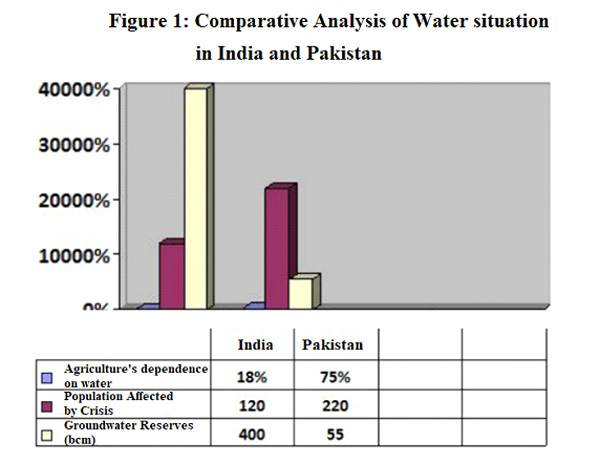
Regarding the connection between the issue of water and nuclear security, Pakistan’s military doctrine and India’s defense posture suggest that the hydroـpolitical crisis is no longer a border dispute, but rather a battle for survival. Pakistan relies on a “Limited First Use” nuclear doctrine to compensate for its conventional force disadvantage against India. This doctrine allows Pakistan to use tactical nuclear weapons (e.g., short-range warheads), if its territorial integrity or vital resources such as dams are threatened. For example, Pakistan has stated that an Indian attack on critical dams like Tarbela or Mangla could trigger a nuclear response.
India, on the other hand, adheres to a “No First Use” doctrine but reserves the right to “massive retaliation”—conventional or nuclear—in case of a Pakistani nuclear strike. India also continues to develop ballistic missiles and defense systems to bolster its deterrence capabilities. However, India’s recent conventional military operations in Kashmir suggest that New Delhi is using conventional military tools to pressure Pakistan, increasing the risk of uncontrollable escalation. India has also threatened to suspend the Indus Waters Treaty (1960), using water as a lever against Pakistan. In response, Pakistan has expanded its nuclear arsenal to defend its water infrastructure.
Water and nuclear security in India-Pakistan relations is a prime example of the convergence of environmental and military crises. Pakistan’s aggressive doctrines and India’s hardline responses have brought the region to the brink of both a human and ecological disaster. Resolving this crisis requires returning to negotiations, strengthening existing water agreements, and reducing reliance on nuclear deterrence. Without such steps, both countries risk becoming trapped in a vicious cycle of “tension-escalation-destruction”. In the worst-case scenario, escalation to the brink of nuclear attack would lead to attacks on strategic dams (such as Tarbela in Pakistan) and the use of tactical/strategic nuclear weapons (e.g., Pakistan’s Nasr missile).
Of course, a gradual de-escalation through UN or neutral third-party mediation (such as the UAE) and international monitoring of the Indus Treaty is a hopeful scenario. However, given some factors (such as the history of crises in Pakistan-India relations, the intervention of regional and global powers and actors, as well as tension-causing elements such as water), the continued proxy conflicts, militant activity in Kashmir and Baluchistan, cyber warfare, and attacks on critical infrastructure remain more likely.
In the short term, establishing emergency communication hotlines between military commanders, and resuming the Indus Treaty under international supervision may help. In the long term, organizing a regional conference with all stakeholders (including China and Afghanistan), and investing in water management technologies (like desalination and smart irrigation), could reduce tensions and help restore relative stability to the region.
Conclusion: A Narrow Border Between War and Peace
The India-Pakistan tension is a dangerous cocktail of historical, religious, and geopolitical factors. While full-scale war may be deterred by nuclear weapons, the risk of proxy wars and environmental crises (such as water scarcity) remains high. The role of external actors like China and the Taliban can be either a threat or opportunity. Resolving this conflict requires a multilateral approach where human security and regional cooperation must take precedence over nationalist agendas.
Ultimately, the future of this crisis depends heavily on the two nations’ ability to build trust mechanisms, and reach a historical compromise over Kashmir. The international community must prevent this conflict from becoming a battleground for great power competition, and instead support sustainable solutions for one of the longest-standing disputes of the 21st century.
Mansoureh Eskandaran, is a PhD in Political Geography.
Sources:
⦁ Bilal Ahmad Mir, (2025). Kashmiri Pandits: Socio-Political Dynamics, Displacement, and Pathways to Return. India Review, 24(2): 131-161.
⦁ http://irdiplomacy.ir/fa/news/2032487
⦁ https://www.avapress.com/fa/note/
⦁ https://www.bbc.com/persian/articles/c70zn0pez1jo
⦁ https://www.mashreghnews.ir/news/1713615/
⦁ https://www.parsine.com
https://www.pishkhan.com/news/338158/
News code:4029
Translator : Dr.Mansoureh Eskandaran Researcher at the Institute for East Strategic Studies (IESS)
Source : East Studies




